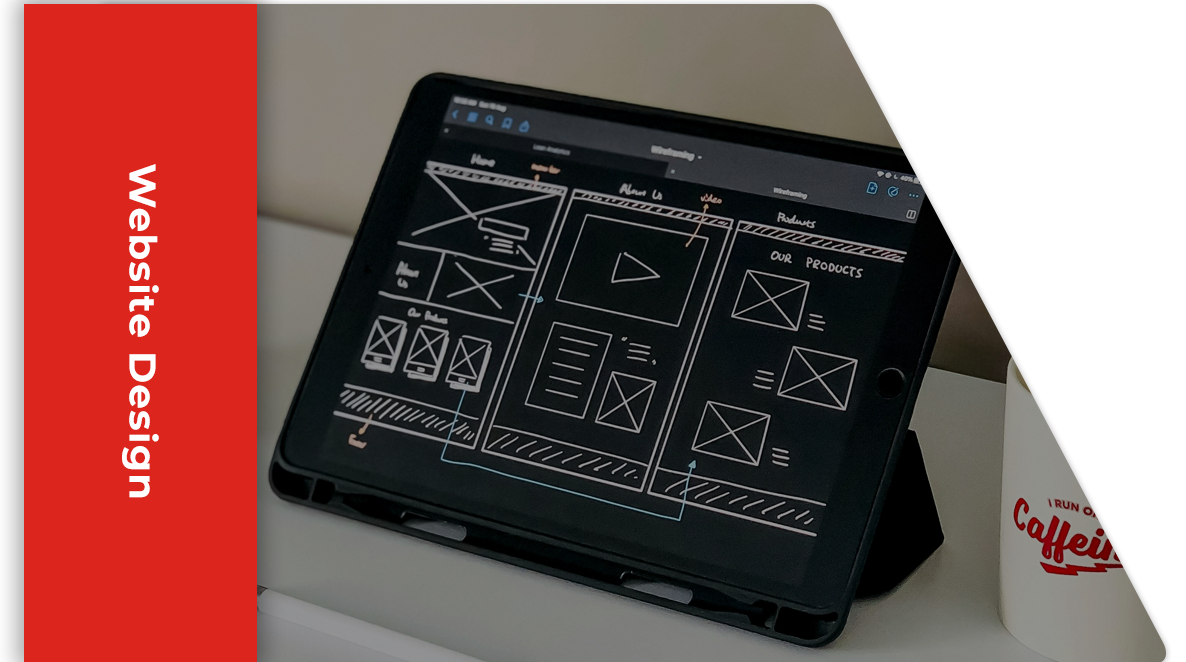Website Design

Website design is a multifaceted discipline that encompasses both the aesthetics and functionality of a website. It involves various elements such as layout, color scheme, typography, imagery, and user experience to create an engaging and effective online presence.
SEO-Friendly Design
Performance Optimization
Consistency
Key Components of Website Design
-
Layout and Structure
-
Typography
-
Color Scheme
-
Imagery and Graphics
-
Navigation
-
User Experience
Grid Systems
Grid systems help in organizing content in a clean and structured way, ensuring consistency and balance across the website.
Responsive Design
Ensuring that the website adapts seamlessly to different screen sizes and devices is crucial. This involves using flexible grids and images and CSS media queries.
Whitespace
Also known as negative space, it improves readability and focuses attention on key elements by avoiding clutter.
Font Selection
Choose fonts that are easy to read and align with the brand’s identity. Combining different fonts (serif and sans-serif) can create visual hierarchy and interest.
Readability
Ensure text is legible with appropriate font sizes, line heights, and color contrast.
Brand Colors
Use a color palette that reflects the brand’s identity and creates a cohesive look across the website.
Contrast and Accessibility
High contrast between background and text improves readability and accessibility for all users, including those with visual impairments.
Emotional Impact
Different colors evoke different emotions and can influence how users perceive your brand.
High-Quality Images
Use clear, high-resolution images that enhance the content and don’t slow down the site’s load time.
Custom Graphics:
Integrate custom icons, illustrations, and infographics to add uniqueness and clarity to the content.
Intuitive Menus
Design navigation menus that are easy to understand and use, helping users find information quickly.
Breadcrumbs
Include breadcrumb trails to help users understand their location within the site structure.
Search Functionality
A well-implemented search bar improves usability, especially for content-rich websites.
Loading Speed
Optimize images and code to ensure fast loading times, which is critical for retaining users.
Interactive Elements
Use interactive elements like hover effects, animations, and transitions to make the website more engaging.
Feedback Mechanisms
Implement forms, surveys, and feedback options to gather user input and improve the site’s functionality.
Website Design process

Research and Planning
Understand the target audience, competitors, and industry trends. Define the website’s goals and objectives.
Wireframing and Prototyping
Create wireframes to outline the basic structure and layout. Develop interactive prototypes to visualize the user journey and test functionality.
Design and Development
Design the visual elements, including typography, color schemes, and graphics. Develop the website using HTML, CSS, JavaScript, and other relevant technologies.
Testing and Launch
Conduct thorough testing across different devices and browsers to ensure compatibility and performance.
Maintenance and Updates
Regularly update the website content and design elements to keep it fresh and relevant. Perform routine maintenance to fix bugs and improve performance.
Why Choose Website Design
Choosing to pursue website design offers a multitude of benefits and opportunities for individuals and businesses alike.
High Demand and Job Opportunities
The demand for skilled web designers continues to grow as businesses and individuals increasingly rely on their online presence.
Creative and Technical Fusion
This specialization allows graphic designers to apply their aesthetic skills in a digital environment, while also engaging with the technical aspects of web development.
Integrated Branding Solutions
Graphic designers with web design skills can offer comprehensive branding solutions to clients.
Continuous Learning and Growth
The field of website design is constantly evolving with new technologies, trends, and best practices.
User-Centric Design
Website design emphasizes user experience and user interface design, which are crucial for creating effective and engaging websites.
